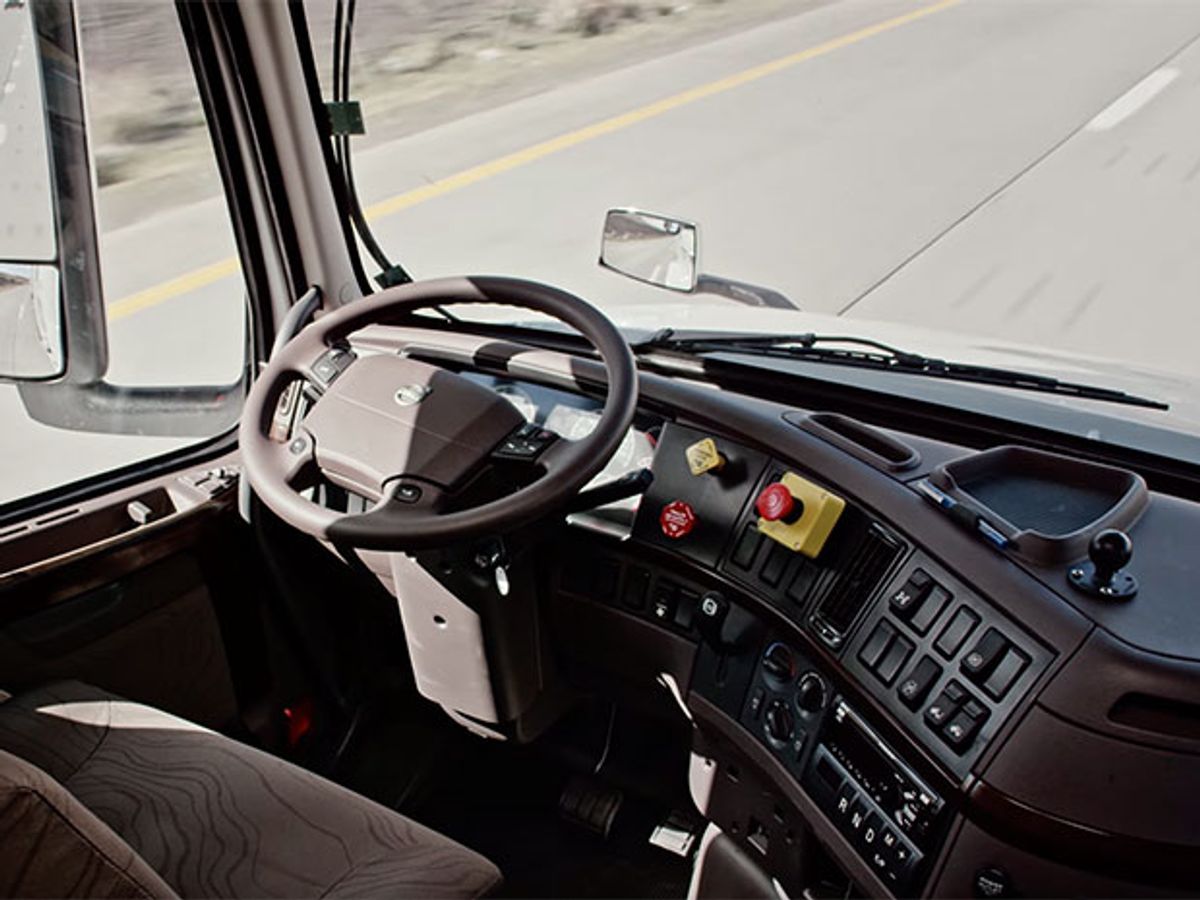Ottomotto, a newly unveiled startup formed by veterans of the Google car project, is planning to provide self-driving technology to today’s long-haul trucks.
It’s a logical first application. Semitrailers spend most of their time on highways, and highway driving is by far the easiest sort of driving to automate. So close is the industry to that goal that companies like Tesla and Daimler already feel the need to use buzzers and other tricks to prod drivers away from their daydreams when their hands are off the steering wheel for more than a few seconds.
Anthony Levandowski left the Google car project to start the company back in January, the Wall Street Journalreports. Lior Ron, who had been in charge of Google Maps, also joined, along with 39 others, including some from Tesla and Apple—both of which are also working on robocar technology.
Levandowski told the Journal that his company, which he calls Otto for short, would seek a competitive advantage by retrofitting existing trucks rather than putting self-driving systems into new ones. Otto, so far mostly a self-funded operation, is working with three Volvo trucks.
One big incentive for roboticizing the truck fleet is to stretch out the thin supply of long-haul drivers, which is 50,000 short of the mark in the United States, according to the American Trucking Associations. Strict rules require that drivers rest at set intervals, a problem that could be eased if drivers could lounge in the back of the cabin while the truck cruises the highway unattended.
Other firms are taking a different tack. For instance, Peloton Technology, of Mountain View, Calif., specializes in platooning, in which a lead truck driven by a professional driver leads a string of autonomous trucks behind it. Volvo, an investor in Peloton, has long been a pioneer of platooning, as it recently demonstrated with three convoys of two or three trucks each; the longest convoy trip was from Stockholm to Rotterdam.
Drivers had to be in all the trucks, and they had to attend to the road, as the laws still require. But even so, platooning saves time and money by allowing the trucks to stay in close formation, thus minimizing air resistance.
Philip E. Ross is a senior editor at IEEE Spectrum. His interests include transportation, energy storage, AI, and the economic aspects of technology. He has a master's degree in international affairs from Columbia University and another, in journalism, from the University of Michigan.



